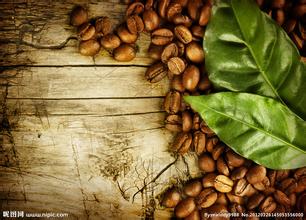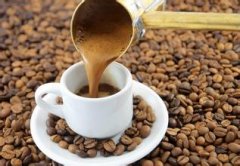A brief introduction to the treatment method of grinding degree and baking degree of Panamanian Kasha boutique coffee beans with fruit flavor

Panamanian Coffee Pokuit Butterfly
What is more surprising is that on the basis of very excellent quality, the very people-friendly price of this coffee bean makes the performance-to-price ratio of this coffee bean. What is special about this coffee bean is that it is made up of three varieties, of which 40% are rosy summer varieties, giving this coffee a distinct rosy summer flavor. According to the information obtained, due to the historical reasons of the manor, in order to pursue yield at that time, the early Rosa varieties were mixed with the coffee trees of Kaddura and Kaduai, and in order to facilitate picking, coffee farmers did not reclassify them, but directly mixed the three varieties. After that, as Rosa rose to fame and the price soared, the processing plant began to carry out fine washing treatment for such a coffee bean.
Nowadays, there are many ways of washing, but generally speaking, the floating beans are removed after the coffee fruit is picked, then the pulp is removed, and then the coffee beans are soaked in a fermentation trough. The enzymes in the water will soften the mucus attached to the peel of the coffee beans. Natural yeast will break down the sugar in the mucus, a process called fermentation. After the fermentation is completed, move the coffee beans to the sun field to dry. In the process of drying, you need to constantly turn the coffee beans to ensure the uniformity of the drying. Finally, the shell is kept in the warehouse, and some raw bean merchants place an order before shelling and bagging. The processed coffee tastes clean, emphasizing bright and lively acidity, as well as clear fruit flavor and floral aroma.
Panama Coffee is grown in the western part of the country, near Costa Rica and the Pacific Ocean. The Boquet district of Chiriqui province is the most famous for its coffee, and Vocan,Santa Clara is also famous. Other areas include David, Remacimeinto, Bugaba and Tole. Only coffee grown at elevations between 1300 and 1500 meters above sea level is considered special coffee.
The microclimate of the Panamanian highlands is the most important resource that makes Panamanian coffee unique.
The most important resource that makes Panamanian coffee unique is its microclimate. The east-west environment of the Republic of Panama converges cold air over 6500 feet through the Central Mountains, creating a variety of microclimates in the Boquete and Volc á n-Candela regions, making it a major source of Panamanian coffee. These unique coffees are grown in nutritious and balanced land located in the Baru volcano region.
But in my opinion, I am used to drinking beans that are too clean and well-behaved, and beans treated with sun or honey often bring me more surprises. Balanced and soft Central American coffee, the use of honey or sun treatment will give it more possibility of flavor, and the feedback characteristics will become more plump, complex and multi-layered. Like the Sunshine Alida introduced to you, it is moderately sour and sweet after import, close to the flavor of strawberry fruit tea, rich, complex and unique aroma, transformed into toast and cream, vanilla aroma. The collision between berries and the unique flavor of fermented sauce gives Alida a unique flavor.
In fact, there are not many suggestions on production, not intentionally lazy and unwilling to share with you, just because their own quality is good enough, under the premise of ensuring freshness, in the normal scope of play, generally will not be washed too bad. Generally speaking, the roasting degree of the above two types of coffee will mostly be medium and shallow roasting, and it is recommended that the temperature of hand brewing is about 90 ℃. During the extraction of the first stage, the stirring and disturbing intensity of the water column can be increased, the high quality flavor can be fully released, and the stirring intensity will be reduced in the latter stage, so as to prevent the bad flavor from being precipitated. All that's left is to enjoy it.
When the commodity price of coffee was relatively low, the Panamanian Fine Coffee Association organized a competition called "Best Panama": coffee beans from different parts of Panama were ranked and auctioned online. Esmeralda Manor has been growing a kind of coffee called "Geisha" for many years, and the auction has made their coffee known to more people. Then they won the first place in the competition for four consecutive years from 2004 to 2007, and then won the competition again in 2009 and 2013. It kept breaking records until it was priced at $21/lb in 2004 and then rose to $170/lb in 2010. In 2013, a small portion of the sun-treated coffee was sold for $350.25/lb. There is no doubt that this is the highest price ever sold for a single manor coffee.
Unlike some other high-priced coffee (such as cat shit, Blue Mountain), the coffee quality of this estate is really up to its price level, although high demand and market factors also play a role. This record-breaking coffee tastes unusual: bright and strong floral and citrus flavors, full of tea. All these come from the advantage of "Geisha".
This estate has led to the cultivation of "Geisha" in many coffee plantations not only in Panama but also throughout Central America. For many coffee farmers, this variety means a high price, and to a large extent, this perception is correct. Because as a manor that grows "Geisha", the price of its coffee is always higher than that of other estates.
Traceability of origin
Panamanian coffee has high traceability of origin. Generally speaking, the origin of coffee in Panama can be traced to a single manor or even to a field on the manor.
Flavor characteristics
The better coffee in Panama has citrus and floral aromas, bright taste, elegant and complex flavor.
Population: 3406000
2013 production: 6000 tons
The distinction between Panamanian growing areas mainly depends on the sales situation of coffee, but mostly on geographical distribution. In the past, coffee was widely spread, and the following areas are actually one area, but these areas are closely linked.
Boquete
This is the Panamanian region that we are most familiar with. The special mountainous terrain of this area forms a microclimate which is very suitable for growing coffee. Cool weather and frequent fog slow down the ripening process of coffee cherries, and some even say that the climate can already simulate high-altitude planting.
Altitude: 400-1900m
Harvest period: December to March
Planting varieties: Tibica, Kaddura, Kaduai, bourbon, Rosa, San Ramon
Coffee varieties: Geisha, Catuai, Caturra
Planting altitude: 1400-1700m
Annual rainfall: 3200 mm
Average temperature: about 14-25 ℃
Type of soil: volcanic soil
Grading standard: SHB
Treatment method: washing method
Harvesting method: manual harvesting
Related Certification: NCMA
Raw bean specification: 18 mesh
Harvest year: 2015
Cup test results: Apple, Potato, Maple syrup, Lemon Citrus, Coffee blossom, Roasted hazelnuts, Dark chocolate
Fragrance (dried incense): Jasmine, citrus, tea, honey
Aroma: berries, flowers, oils, vanilla, citrus
Flavor: sweet, sour, non-irritating, clean, bergamot, honey, citrus, spices, flowers, berries, tea, cherries, delicate finish, long-lasting aroma, classic jadeite manor Geisha flavor
Alida is treated with water washing, sun exposure and honey treatment. It is worth mentioning that Alida's sun-dried beans are one of my favorite beans. I like the dry aroma after grinding very much, and I am particularly greedy for its unique flavor of sauce and wine. But there are also friends who can't readily accept the flavor of soy sauce in sun-dried beans at first. Not long ago, I heard some students use "sweet noodle sauce" to describe the sauce they smelled in the sun beans, and rejected the taste.
Panamanian coffee is classified and numbered into small batches, which are designed to have a small capacity for optimal management, and classification numbers allow buyers to understand and track the entire process.
Because of its small quantity, Panamanian coffee products are based on special coffee. The country provides its high-quality products to specialized stores around the world, such as Denmark, Britain, Greece, Norway, Sweden, South Korea, Japan, Taiwan and the United States.
Panamanian Coffee-the King of Coffee Price ratio in Central America
Panama has been among the world's best coffee producers since three years ago, surprising countries that have been in the vanguard of developer production for many years. Panamanian coffee is mainly produced in the west near the Costa Rican border, producing the best washed coffee. Compared with coffee beans grown at low and middle elevations, the low temperature and stable climate at high elevations in Panama are more beneficial to the growth of coffee beans. The coffee beans grown here grow slowly, have the strongest and special flavor, and the hardness of the coffee is the hardest.
"Panamanian coffee beans | how about Panamanian coffee beans, Mr. Wen? Panamanian coffee is divided into small batches and classified w.kaf.name. "
Coffee beans at high altitude have the most complete taste, high mellowness and diversified flavor, such as chocolate, caramel, flower and so on. The entrance is warm and moist with moderate sour and bitterness. The Panamanian extremely high growth bean is one of the most outstanding varieties.
There are many excellent manors in the Pokuit area, except the famous Emerald Manor, Alida Manor, Aqaba Manor and so on, all of which produce high-quality boutique coffee. This is not only due to the superior ecological conditions of the Pokuit region of Panama and the fertile volcanic ash soil of the Baru volcanic land. Another important factor is that the microclimate in the Poquet Heights of Panama is a unique and important resource for boutique coffee in the Pokuit region. This is the Panamanian environment from east to west that allows cold air to converge above 6500 feet through the Central Mountains, thus creating a variety of microclimates in the Pokuit region, making its temperature and rainfall very suitable for plant growth. so the coffee trees grown here grow very well.
In Poquet's unique planting environment, there is naturally not only the rose summer of emerald, the king of coffee, regardless of flavor, quality and value, but I think it is quite extravagant to drink rose summer every day, and even if there is no economic pressure, it is not like eating shark's fin and bear's paw every day. The same is true of coffee. Only by dabbling in a wide range of subjects can you enjoy the pleasure of tasting coffee more. Panamanian Coffee Pokuit Butterfly
Then in the land of Pokuit, there is a bean with a high performance-to-price ratio. And it has a very beautiful name-Flower Butterfly. She has 40% high-quality Rosa pedigree, which is composed of Rosa, Kaddura and Kaduai. It is planted in the Baru volcano region of Pokut and grows in the volcanic area at an altitude of 1600 meters. The treatment plant uses fine washing treatment. Panama's special local microclimate leads to abundant rainfall in this area, and a large temperature difference between day and night, coupled with the unique volcanic rock and soil of the volcanic area, as well as meticulous harvesting and fine treatment. It makes this coffee perform well in terms of richness, acidity and floral aroma.
Important Notice :
前街咖啡 FrontStreet Coffee has moved to new addredd:
FrontStreet Coffee Address: 315,Donghua East Road,GuangZhou
Tel:020 38364473
- Prev

Jasmine fragrant Panamanian Kasha Fine Coffee Bean planting situation, Geographic location, Climate and altitude
Panama Coffee is grown in the western part of the country, near Costa Rica and the Pacific Ocean. The Boquet district of Chiriqui province is the most famous for its coffee, and Vocan,Santa Clara is also famous. Other areas include David, Remacimeinto, Bugaba and Tole.
- Next

A brief introduction to the description of flavor and aroma characteristics of Aldura boutique coffee beans with slightly bitter taste
Mexico: Aldura coffee flavor taste characteristics: soft aroma, mellow and comfortable, with wine aroma. Mexico has a long history of producing coffee and is currently one of the most important coffee producing countries in the world. The coffee produced in Mexico is naturally called Mexican coffee. About 5 ℃ of the total area of Mexico are plateaus and mountains, with an annual average temperature of 2527 ppm.
Related
- Detailed explanation of Jadeite planting Land in Panamanian Jadeite Manor introduction to the grading system of Jadeite competitive bidding, Red bid, Green bid and Rose Summer
- Story of Coffee planting in Brenka region of Costa Rica Stonehenge Manor anaerobic heavy honey treatment of flavor mouth
- What's on the barrel of Blue Mountain Coffee beans?
- Can American coffee also pull flowers? How to use hot American style to pull out a good-looking pattern?
- Can you make a cold extract with coffee beans? What is the right proportion for cold-extracted coffee formula?
- Indonesian PWN Gold Mandrine Coffee Origin Features Flavor How to Chong? Mandolin coffee is American.
- A brief introduction to the flavor characteristics of Brazilian yellow bourbon coffee beans
- What is the effect of different water quality on the flavor of cold-extracted coffee? What kind of water is best for brewing coffee?
- Why do you think of Rose Summer whenever you mention Panamanian coffee?
- Introduction to the characteristics of authentic blue mountain coffee bean producing areas? What is the CIB Coffee Authority in Jamaica?

